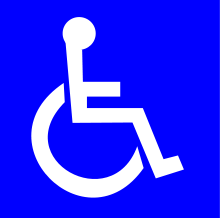And here is another incident that exposes the hollow claims of airlines of being sensitive to the passengers with disabilities. We haven't heard about this from Indigo who is otherwise considered as "Disabled Friendly" - perhaps the lack of training and sensitivity among the staff and greed to earn more money is what seems the reason behind this. Here is the coverage from The Hindu.
Smriti Kak Ramachandran
NEW DELHI, August 30, 2013
As she left home to represent the country at the wheelchair tennis tournament in Bangkok as India’s first ever woman participant, Madhu Bagri was not prepared for a trip that included being forced to pay extra for her sports wheelchair, being left stranded inside the aircraft for an hour and an uncooperative staff that offered to “lift her” instead of helping her out in a wheelchair as is mandated by law.
Ms. Bagri, who travelled to Bangkok for the International Tennis Federation-conducted tournament on August 18 from Ahmedabad, told The Hindu that her ordeal began at the airport, where IndiGo asked her to pay Rs.4,200 for the second wheelchair. This when officials had assured her earlier there would be no extra charge for the second wheelchair.
“At the time of booking the tickets on May 29, I was assured that the second wheelchair will not be counted as extra baggage. The airline executive told me that they could not give it in writing, but would make a note on my travel details. On the day of the journey [August 18], I called the customer care in the afternoon and was again once reassured the same. But when I reached the check-in counter, I was forced to pay more. Since there was hardly any time, I paid up.”
The flight from Ahmedabad to Bangkok with a stopover in Delhi was much worse. On landing in Delhi, Ms. Bagri was told that the airline’s wheelchair was too big to enter the aisle. “I was made to wait inside the aircraft for an hour; they couldn’t find a wheelchair that could enter the cabin. The airline staff was insensitive and offered to lift me instead of getting me the wheelchair.”
She claimed she wrote to the airline on reaching Bangkok, but did not get a satisfactory response. On her way back to India on August 25, she was once again asked to pay for the second wheelchair. “The second time I was asked to pay, I refused. It was totally shocking that despite the earlier assurance and my subsequent complaint, they still expected me to pay. The ground staff was rude and unhelpful even on the return journey and had to borrow a wheelchair from another airline to help me get off the aircraft, because I absolutely refused to let them carry me.
What if they’d have dropped me or there had been an accident? I am appalled at the treatment meted out to me. What really stunned me was that after everything the ground staff actually want a tip!”
Annoyed and angry over the treatment, she questioned the airline’s claims of being sensitive to differently-abled persons.
“While I was stranded in the aircraft, I noticed the staff paying attention to small details, like counting soft drinks can. But it didn’t occur to them to ensure that there are appropriate wheelchairs for those who need them. World over there are facilities that make travel and commuting easy for differently-abled persons, but we still have a long way to go in India. We compromise at every step, the least we can expect is some cooperation,” she said.
IndiGo airlines was contacted for response, but had not responded till the time of going to press.
Keywords:
Source: The Hindu

